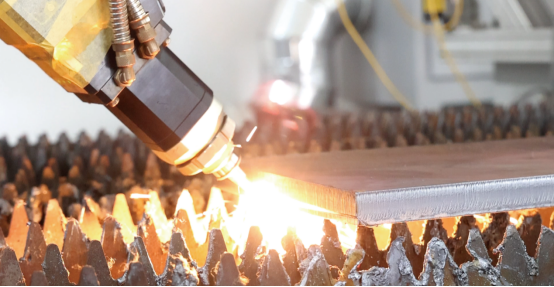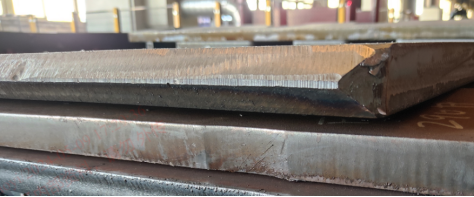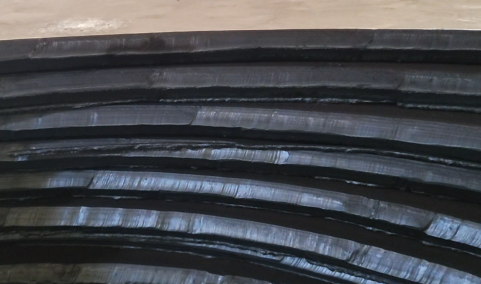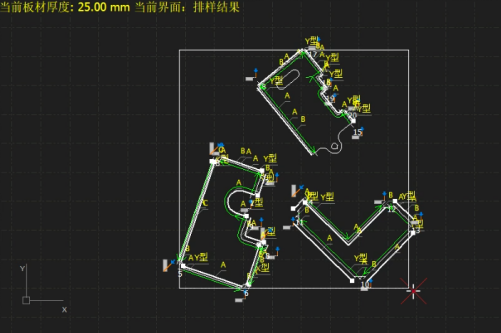-
Product
-
Fiber laser cutting machine
-
Profile Steel/ H-Beam Laser Cutter
high efficiency | high-performance | high quality -
Full Cover Fiber Laser Cutting Machine
supreme configuration | high precision | safe & pollution-free -
Sheet fiber laser cutting machine
tailor-made machine | efficiency boost -
Fiber Laser Bevel Cutting Machine
one-shot bevel | efficiency boost | streamlined process -
High precision fiber laser cutting machine
High precision | small footprint | fully enclosed -
Four-chuck Tube Cutting Lasers
truly zero-tailing | low cost per part | auto loader -
Three-chuck Tube Laser Cutting Machine
top production output | low cost per part | extremely short tailing -
Two-chuck Tube Laser Cutting Machine
top production output | low cost per part | extremely short tailing -
Full Enclosed Fiber Laser Cutting Machine
Integrated design saves installation time and shipping costs. - flexible processing | continuous cutting | efficient production
-
Fully Automatic Loading & Unloading Laser Cutting Production Line
intelligent production | optimizing factory space | reduce labor costs -
Sheet and Tube Fiber Laser Cutting Machine
supreme cost-effectiveness | dual-use laser | space-saving
-
-
Fiber laser welding machine
-
Air-cooled Portable Laser Welding Machine
more flexibility | easy to use | cost effective -
Automatic laser welding machine
fine welding seam | boosted efficiency -
Integrated fiber laser welding machine
instant welding | easy to operate & move -
Handheld fiber laser welding machine
long distance welding | multi-welding modes
-
- Fiber laser cleaning machine
- Bending Machine
-
Fiber laser cutting machine
- Solutions
- Why Morn Laser
- Price
- Contact
- VR
Menu
X- home
-
Product >
-
Morn Laser Secondary Bevel Cutting Solution: Precision, Efficiency, Redefining the Standard for Bevel Cutting
2025-03-19In the metal processing industry, bevel cutting is a crucial pre-welding procedure that directly impacts weld quality, structural strength, and production efficiency. However, traditional bevel cutting methods suffer from low precision, inefficiency, high material waste, and heavy reliance on operator experience. These challenges make it difficult to meet the modern manufacturing industry's demand for high-precision and high-efficiency processing.
In response to industry trends, Morn Laser has introduced a new Secondary Bevel Laser Cutting Solution that leverages intelligent recognition, precise positioning, and automated processing. This innovative approach significantly enhances bevel cutting quality and production efficiency, providing metal processing enterprises with a more efficient and intelligent manufacturing equipment.

Currently, bevel cutting is primarily divided into one-time full-sheet bevel cutting and traditional secondary bevel cutting for individual parts, each with its own limitations.
1.One-Time Full-Sheet Bevel Cutting: High Material Waste and Increased Costs
This method involves performing both straight and bevel cuts on an entire sheet of material simultaneously, making it a common approach in manufacturing. However, when processing Y, X, and K bevels, it often results in low material utilization and excessive waste, significantly increasing production costs. This issue is especially critical in large-scale production, where material waste directly impacts profit margins.

2. Traditional Secondary Bevel Cutting: Low Precision, Low Efficiency, and Inconsistent Quality
Traditional secondary bevel cutting mainly relies on semi-automatic flame cutting, which requires manual marking and positioning. This method has several drawbacks:
High Risk of Manual Marking Errors – Manual positioning is prone to deviations, leading to inaccurate bevel dimensions and angles, which directly affects welding quality.
Slow Cutting Speed, Low Efficiency – Flame cutting is inherently slow and involves multiple manual steps, resulting in low production efficiency.
Poor Quality on Corners and Arcs – Flame cutting struggles to maintain quality when processing curved or cornered bevels, often requiring additional grinding and finishing, which increases production time and labor costs.
Experience-Dependent, Hard to Standardize – This method heavily relies on operator experience, leading to inconsistencies in quality across different workers, making it difficult to achieve standardized production.

To address the limitations of traditional bevel cutting methods, Morn Laser has introduced a new Secondary Bevel Laser Cutting Solution that utilizes intelligent recognition and precise positioning. This innovative approach enhances the automation level of bevel cutting, ensuring higher precision, better cutting quality, and increased production efficiency.
Coarse Positioning: The coarse positioning camera quickly locates the position of parts randomly placed on the workpiece, eliminating the need for manual marking or adjustments. It also matches with the parts database and automatically preprocesses the cutting path, ensuring greater efficiency and accuracy in the setup process.

Precision Scanning: The precision positioning contour scanner scans the part’s outline, automatically calculating and compensating for any dimensional deviations and surface deformations. This ensures highly accurate cutting, even in the presence of material inconsistencies.
Once the cutting of the previous part is completed, the system automatically scans and cuts the next part, ensuring a seamless workflow without manual intervention, greatly improving production efficiency. Additionally, our secondary bevel cutting technology enables corner bevels to be formed in a single cut, ensuring consistent root faces and smooth cutting surfaces. This reduces the need for secondary processing and grinding before welding, further boosting production efficiency. By shifting the bevel cutting process to secondary cutting after the initial blanking, pure straight cuts can be aligned as much as possible, avoiding material waste caused by primary bevel cutting of the entire plate and enhancing material utilization.
If you're looking for an efficient, precise, and intelligent laser cutting solution, Morn Laser is undoubtedly your best choice! Feel free to contact us for more details and discover how we can elevate your cutting process!
- Office Address:
- 17F, Building 5, Qisheng Mansion High-Tech Zone, Jinan, Shandong 250101, China
- Email: info@mornlaser.com
- Mobile/WhatsApp/WeChat: +86 151 6916 6350
CONTACT USCopyright © 2008-2022 Morn Laser All Rights Reserved.![]() Get a Quote
Get a Quote
![]() Get a Quote
Get a Quote
Cookies
We use cookies to improve our services and remember your choice for future visits. By clicking "Accept cookies", you consent to the use of cookies on this website.
Read our Privacy Policy
Get a Quote x
![]()







